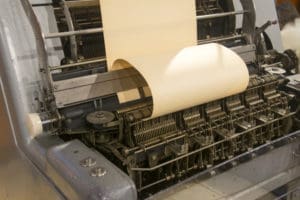 Many tech pioneers have a similar dossier: male, came of age in the late 1970s, dropped out of college, made millions building computers in their garage/dorm room/basement. Then, there’s Ada Lovelace: an 1800s female with a backstory suitable for a soapy period drama.
Many tech pioneers have a similar dossier: male, came of age in the late 1970s, dropped out of college, made millions building computers in their garage/dorm room/basement. Then, there’s Ada Lovelace: an 1800s female with a backstory suitable for a soapy period drama.
Born on Dec. 10, 1815, Lovelace was the only child of the Romantic poet Lord Byron and Lady Annabella Byron. Her parents’ marriage was ill-fated; they separated when Ada was only 5 weeks old, and Lord Byron was never to see his daughter again. Lady Annabella—whom Byron called the “Princess of Parallelograms”—spent her life instilling a love of mathematics in her daughter. Lovelace did have a penchant for numbers, but it was perhaps her father’s poetic spirt that led her to prescient conclusions about the potential for technology.
Building the analytical engine
While making her debut in London at age 17, Lovelace met mathematician Charles Babbage, inventor of the Difference Machine, an early calculator now housed at the Science Museum in London. Lovelace was fascinated by the machine’s potential, and she kept it and Babbage in mind as she married and had children. After the birth of her third, she contacted Babbage and asked for a referral to a mathematics instructor. As they reconnected, Babbage let her know of his plans to build an “Analytical Engine”: a machine that could be programmed to follow instructions, making it the first computer.
Lovelace began translating a French article about the Analytical Engine, adding copious notes of her own about what such a machine could do—including the poetic observation that the engine could weave “algebraic patterns just as the Jacquard loom weaves flowers and leaves.” Babbage had the vision for the machine; Lovelace had the vision for its potential.
Alas, Babbage never completed the Analytical Engine, and Lovelace died of uterine cancer in 1852 at age 36. The “prophet of the computer age” is celebrated each year on Ada Lovelace Day, the second Tuesday of October, which has become a day dedicated to the achievements of women in STEM.
Photo: Libor Píška / Shutterstock
